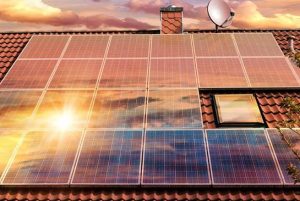Efficiency of Low Light Solar Panels: How Good Are They?
In the quest for renewable energy solutions, solar power stands out as a beacon of hope and innovation. Among its advances, low light solar panels have sparked interest for their ability to harness sunlight even under less-than-ideal conditions. But just how efficient are these technological marvels? Let’s dive into the data and details.

Unpacking Low Light Solar Panel Tech
At the core of low light solar panel technology lies the principle of optimizing light absorption. Traditional solar panels typically thrive in bright, direct sunlight, yet falter under cloudy skies or during the early morning and late afternoon. Low light solar panels, however, are designed with materials like amorphous silicon or organic photovoltaic cells, allowing them to capture a broader spectrum of light.
Performance Metrics: A Deep Dive
When evaluating solar panel performance, two metrics stand out: efficiency and power output. Efficiency measures how well a panel converts sunlight into electricity. For standard panels, this figure hovers around 15-20%. Low light solar panels, on the other hand, often showcase efficiencies in the range of 10-15% under optimal conditions. However, their ability to perform under lower light conditions can lead to more consistent power generation throughout the day.
Power output, measured in watts, indicates the energy a panel can produce. A typical low light panel might generate less power per square meter in direct sunlight compared to a conventional panel but outperforms as light conditions diminish.
Case Studies: Real-World Impacts
Consider a scenario in a region prone to overcast conditions. Traditional panels might experience significant drops in output, whereas low light panels maintain a steadier performance curve. In a study examining solar installations in Seattle, a city known for its cloudy weather, low light solar panels produced up to 25% more electricity on average annually than their standard counterparts.
The Bright Side of Innovation
Manufacturers and researchers are pushing the envelope on low light technology. Innovations in panel design and materials aim to bridge the efficiency gap, with some newer models reporting efficiencies closer to the higher end of the spectrum under varied lighting conditions.
A Green Future: Embracing Low Light Technology
Adopting low light solar panel technology opens doors to broader solar adoption, especially in areas once considered suboptimal for solar deployment. This shift not only diversifies renewable energy portfolios but also underscores the importance of innovation in overcoming environmental challenges.
For those intrigued by the prospects of low light solar panel technology, diving deeper into the specifics can provide a clearer picture of its potential. Click here to explore more about these ingenious devices and their role in shaping a sustainable energy future.
In the grand scheme of things, low light solar panels represent a significant stride toward making renewable energy accessible and effective, regardless of geographical and meteorological challenges. With continued research and development, their efficiency and utility are only set to improve, marking another step forward in our journey towards a cleaner, greener planet.